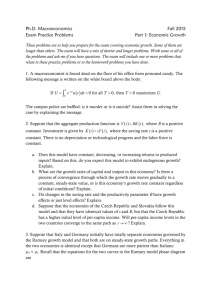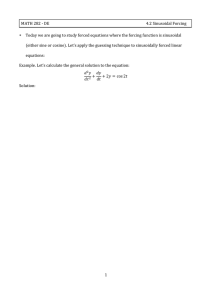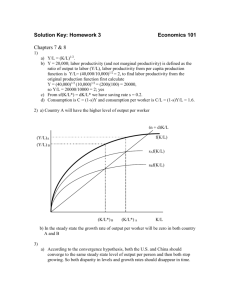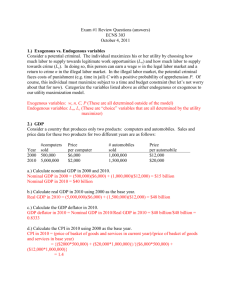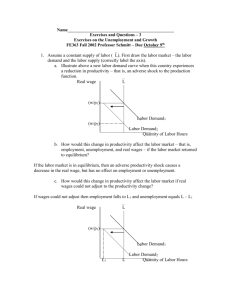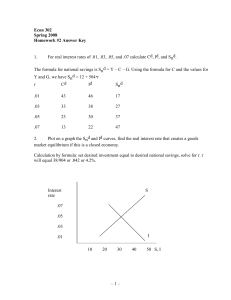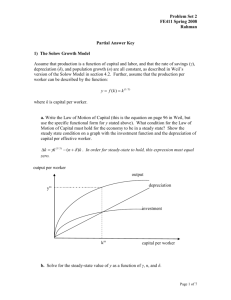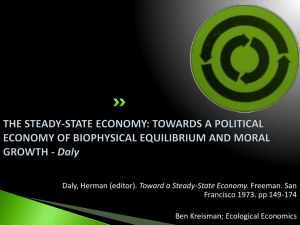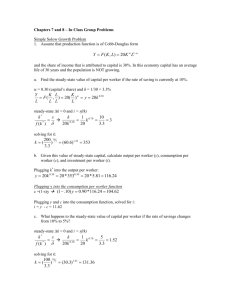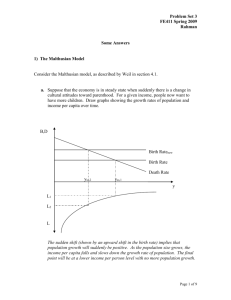HW3
advertisement
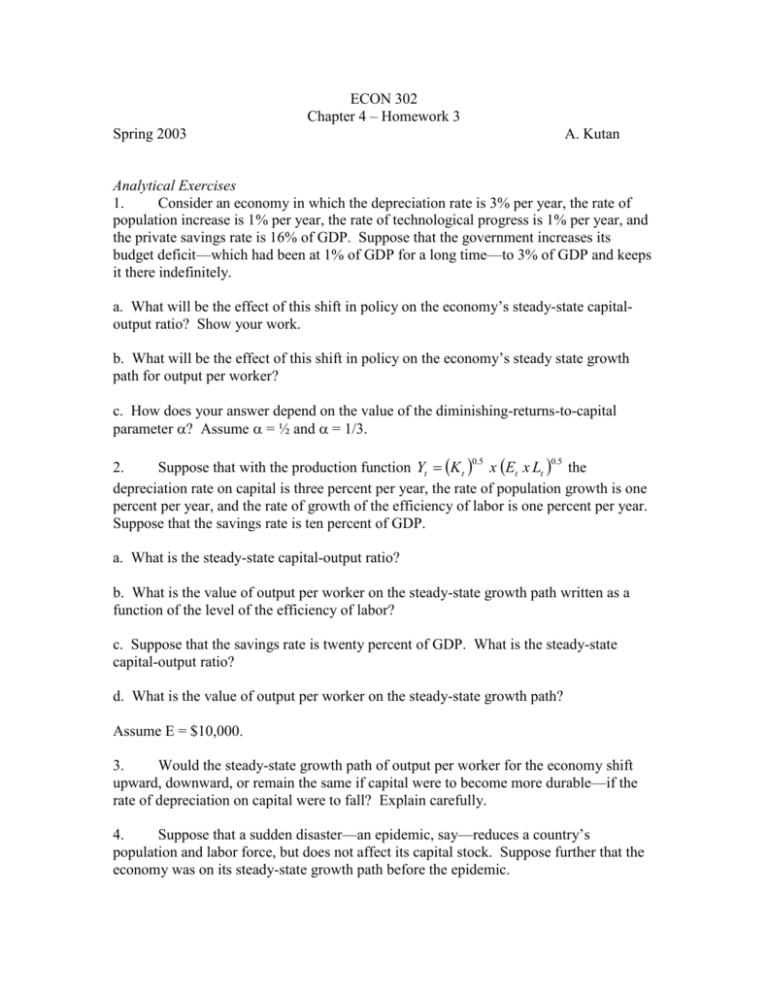
ECON 302 Chapter 4 – Homework 3 Spring 2003 A. Kutan Analytical Exercises 1. Consider an economy in which the depreciation rate is 3% per year, the rate of population increase is 1% per year, the rate of technological progress is 1% per year, and the private savings rate is 16% of GDP. Suppose that the government increases its budget deficit—which had been at 1% of GDP for a long time—to 3% of GDP and keeps it there indefinitely. a. What will be the effect of this shift in policy on the economy’s steady-state capitaloutput ratio? Show your work. b. What will be the effect of this shift in policy on the economy’s steady state growth path for output per worker? c. How does your answer depend on the value of the diminishing-returns-to-capital parameter ? Assume = ½ and = 1/3. 2. Suppose that with the production function Yt K t x Et x Lt the depreciation rate on capital is three percent per year, the rate of population growth is one percent per year, and the rate of growth of the efficiency of labor is one percent per year. Suppose that the savings rate is ten percent of GDP. 0.5 0.5 a. What is the steady-state capital-output ratio? b. What is the value of output per worker on the steady-state growth path written as a function of the level of the efficiency of labor? c. Suppose that the savings rate is twenty percent of GDP. What is the steady-state capital-output ratio? d. What is the value of output per worker on the steady-state growth path? Assume E = $10,000. 3. Would the steady-state growth path of output per worker for the economy shift upward, downward, or remain the same if capital were to become more durable—if the rate of depreciation on capital were to fall? Explain carefully. 4. Suppose that a sudden disaster—an epidemic, say—reduces a country’s population and labor force, but does not affect its capital stock. Suppose further that the economy was on its steady-state growth path before the epidemic. a. What is the immediate effect of the epidemic on output per worker? b. On the total economy-wide level of output? c. What happens subsequently? Policy Exercises 5. In the mid-1990s during the Clinton Presidency the U.S. eliminated its federal budget deficit. The national savings rate was thus boosted by 4% of GDP, from 16% to 20% of real GDP. In the U.S. in the mid-1990s, the rate of labor force growth was 1% per year, the depreciation rate was 3% per year, the rate of increase of the efficiency of labor was 1% per year, and that the diminishing-returns-to-capital parameter is 1/3. Suppose that these rates continue into the indefinite future. a. Suppose that the federal budget deficit had remained at 4% indefinitely. What then would have been the U.S. economy’s steady-state capital-output ratio? b. If the efficiency of labor in 2000 were $30,000 per year, what would have been your forecast of output per worker in the U.S. in 2040? 6. Output per worker in Mexico in the year 2000 is about $10,000 per year. Labor force growth is 2.5% per year. The depreciation rate is 3% per year. The rate of growth of the efficiency of labor is 2.5% per year. The savings rate is 16% of GDP. And the diminishing-returns-to-capital parameter is 0.5. a. What is Mexico’s steady-state capital-output ratio? b. Suppose that Mexico today is on its steady-state growth path. What is the current level of the efficiency of labor E? c. What is your forecast of output per worker in Mexico in 2040?

